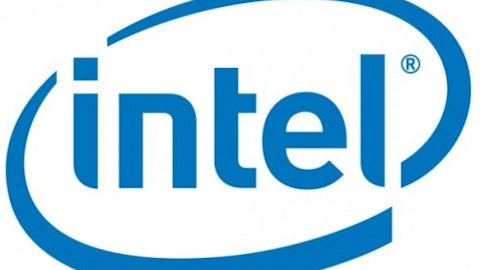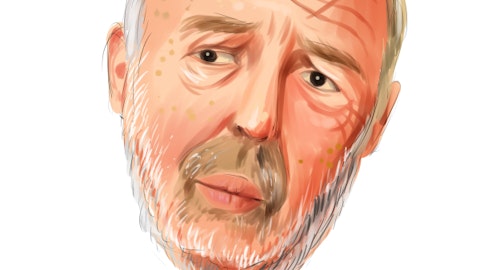Luma’s thesis didn’t necessarily raise any new points for the bear case against StoneMor (in my opinion), but it highlighted some of the big disconnects between the company’s results under GAAP and the non-GAAP figures reported by management.
Essentially, Luma turned out to be correct in believing that StoneMor’s situation would eventually prove to be unsustainable, although no one knew exactly when or how.
What Caused StoneMor’s Distribution Cut
The company’s struggle for sales growth turned out to be the pin that pricked the balloon. Luma’s report observed that StoneMor’s organic growth of burial spaces was, on average, declining in areas that the company had not made any recent acquisitions.
Why has organic growth been such a struggle? My theory is that StoneMor is facing a secular headwind caused by changing burial preferences. More specifically, the rise of cremation is making growth difficult. Cremation services generate much less revenue and carry lower margins.
In June 2016, the National Funeral Directors Association reported that the rate of cremation likely exceeded that of burial in 2015 for the first time. As seen below, this trend is expected to continue accelerating over the next 15 years.

I could be wrong, but the figures presented by the National Funeral Directors Association are alarming for a company such as StoneMor that generates the bulk of its revenue from traditional cemetery and burial offerings.
StoneMor Partners L.P. (NYSE:STON) last reported quarterly results on August 5, 2016, and management noted that recent sales performance had been below acceptable levels.

Source: Simply Safe Dividends
The company had made a decision last year to “improve the overall quality” of its sales force, which involved an effort to replace the bottom third of the sales team (approximately 180 people).
StoneMor teamed up with a national consulting firm and began implementing a revised compensation structure focused more on commission to improve sales performance accountability on October 1.
This resulted in far more sales people immediately resigning than management expected. Over 125 sales people (out of around 525-550) quickly left the company in light of the change in compensation plans. While many of these people might have been bad apples that StoneMor didn’t want in the long term anyway, the short-term impact was painful.
Revenue missed expectations last quarter because of the lower headcount and StoneMor’s inability to quickly revamp its sales force. Here’s what management said during the company’s earnings call on August 5, 2016:
“In hindsight it appears that the significant changes we made last year were put in place in too short period of time. We underestimated the number of sales individuals that would leave and we have been too slow in replacing them. We know what went wrong and how to fix it. It requires a commitment to recruiting. Our current problems lie solely with our pre-need sales and specifically and specifically with the number of sales individuals we have. The remaining 60% of our revenue sources are performing well.”
Source: Seeking Alpha
It takes time to replace employees, especially when stronger emphasis is put on bringing in much higher quality sales people than those who departed the company. While StoneMor is only looking to add around 100 people to its sales team, I can’t imagine it is easy to find people with both strong sales skills and a desire to put their talents to work in the cemetery industry.
It’s hard to say how long it will take StoneMor to recover from this blunder. Right now, the short-term outlook remains ugly.
StoneMor’s third quarter results are even worse than management expected, which prompted the distribution cut. Efforts to regrow the sales team have proved to be very difficult, hurting revenue and creating plenty of uncertainty for investors.
Here are some comments issued by management in StoneMor’s recent press release:
“However, previous efforts to accomplish our salesforce goals have meaningfully lagged our expectations, resulting in a negative impact on our revenue. While 3rd quarter 2016 results are not yet final, preliminary data has led the General Partner and the Board of Directors to temporarily reduce the quarterly cash distribution to $0.33 per unit. This distribution level, along with previously announced cost savings measures totaling $7 million annually, will enhance StoneMor’s liquidity by approximately $12 million in quarterly cash savings…
“While we are striving to accelerate the timeline of hiring and training additional sales talent, we estimate that this could take up to an additional six to nine months to attain the level of productivity we expect. We intend to provide monthly updates on the sales team expansion for greater visibility on our progress to the levels we are targeting. At that time, we will reassess the distribution and will look to reset it at the appropriate level.”
It’s hard to believe that a company paying steadily rising distributions for 10+ years could hurt itself so badly and so quickly to slash its distribution by 50% with such little warning. This is especially true in light of the company’s total liquidity of $90 million (compared to $77.5 million of distributions paid last year), cash distribution coverage ratio of 1.3 times last quarter, and ongoing cost improvement initiatives.
Regardless, many investors are now grappling with management’s last remark that they will “reassess the distribution and will look to reset it at the appropriate level” within the next 6-12 months.
It seems like fixing the sales team will eventually happen, and the market is notorious for overreacting to short-term events that don’t impact a company’s long-term earnings power. Might StoneMor be a high yield bargain?




